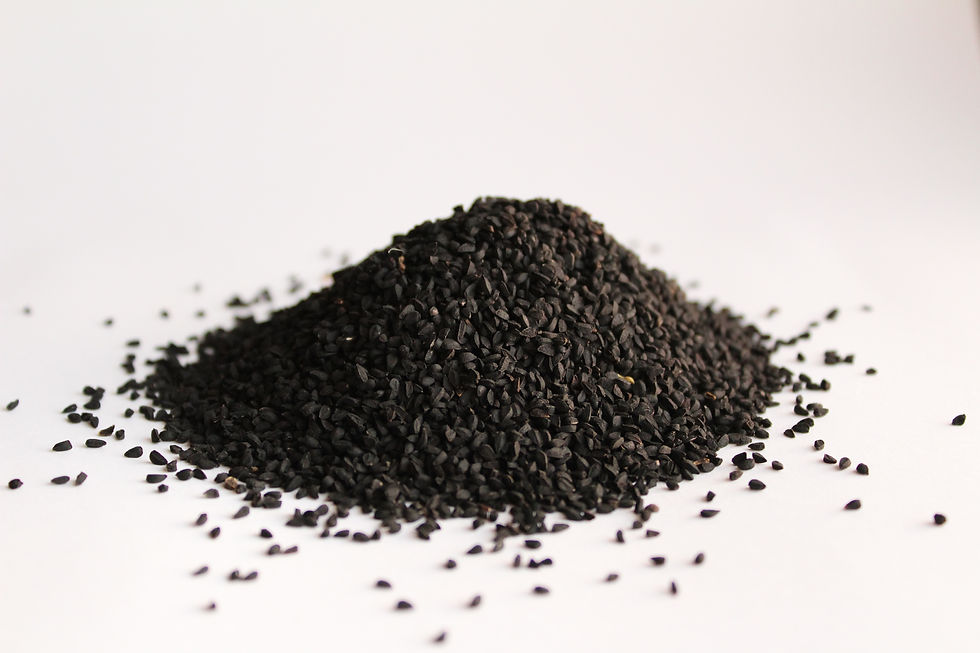Melanin Pigment: Form & Function in Nature
- Sylvia Rose

- Apr 7
- 4 min read
Melanin is a pigment found in many organisms such as plants, fungi, microbes and animals including humans. Its multiple functions adapt to the requirements of different environments.

Melanin is often associated with skin color but its functions go deeper. It's a group of pigments found across the biological spectrum. The melanin molecule gives protection, structural support, and even harvests energy.
About Melanin
Melanin is a complex biopolymer, a large molecule made of repeating units. The units derive from phenolic or indolic compounds.

The exact structure and properties of melanin vary depending on organism and the biosynthesis pathway used.
Eumelanin: Dark brown or black, this is the most common type found in humans. It's essential for UV protection.
Pheomelanin: Ranges in color from yellow to reddish-brown, it contains sulfur and is responsible for red hair and freckles in humans.
Allomelanins: These are found primarily in plants and microorganisms, often without nitrogen in their structure.
The primary function of melanin is to absorb ultraviolet (UV) radiation. Melanin also helps prevent oxidative stress, and influences metabolic functions.

Creation of Melanin
A natural pigment, melanin is produced by melanocyte cells. It forms through the biochemical process melanogenesis. While specific enzymes and pathways differ between organisms, the general principle is the same.
Vitamin D is important to the process of melanogenesis. It increases L-Dopa cells, precursors to dopamine. This induces differentiation of immature melanocytes and increases melanocyte activity
Animals: Process starts with the amino acid tyrosine. The enzyme tyrosinase converts tyrosine into L-Dopa, then dopaquinone. A series of spontaneous reactions and enzymatic modifications turn dopaquinone into eumelanin.

Dopaquinone, also known as o-dopaquinone or L-dopaquinone, is a reactive compound and precursor to melanin pigments. Addition of cysteine creates pheomelanin.
The reactions occur in specialized organelles, the melanosomes, located within melanocyte cells.
Plants: Plant melanin synthesis involves the polymerization of phenolic compounds like flavonoids and tannins, often using enzymes like polyphenol oxidases.
Melanin is not universally found in plants as it is in animals. Some plant species, like sorghum, create it as a UV protectant and antioxidant. It's found to increase the plants' resistance to drought.

Fungi and Microorganisms: Many bacteria and fungi produce melanin, often through the polyketide pathway. They use precursors like catechol or homogentisate and diverse enzymes to create specific types of melanin.
Fungi synthesize melanin to guard against UV radiation and dehydration.
It also contributes to structural integrity. Melanin-rich fungi endure a range of environmental stresses and are more resistant to drought.
Uses of Melanin
Animals
UV Protection: The primary function of melanin in humans is to absorb harmful ultraviolet (UV) radiation from the sun, protecting underlying DNA. It helps prevent skin damage like sunburn and skin cancer.
People with darker skin, containing more melanin, are generally less susceptible to UV-related damage. In humans, melanin determines skin, hair, and eye color.

People with higher eumelanin levels have darker skin. Those with higher pheomelanin levels have lighter skin tones.
Eye Protection: Melanin in the iris protects the retina from excessive light exposure.
Thermoregulation: In some animals, melanin can contribute to thermoregulation by absorbing sunlight and converting it into heat.
Wound Healing: As an antioxidant melanin protects against reactive oxygen species (ROS), which can hinder wound healing. Synthetic melanin can accelerate tissue repair in damaged skin.

Melanin production varies greatly among animals. Birds and reptiles use melanin for pigmentation in camouflage and mating displays.
In reptiles, melanin functions in thermoregulation, camouflage, communication, and sexual selection, and as an antioxidant and metal regulator.
Melanin is the most common pigment in bird feathers. It provides coloration and structural strength and is important to camouflage and thermoregulation. Colors range from black to brown and earth tones.
Arctic foxes produce melanin in the summer months, changing their white fur to brown. Color variation increases survival success.

Plants
Not all plants produce melanin.
UV Protection: Melanin in plants protects from damage by UV radiation.
Disease Resistance: Melanin strengthens plant cell walls, increasing resistance to fungal and bacterial infections. Pathogenic fungi, however, use melanin to proliferate.
Structural Support: Melanin contributes to rigidity and structural integrity of plant tissues such as seed coats. It helps plants cope with stressors.

Fungi & Microorganisms
UV Protection: Melanin protects fungal and bacterial cells from UV radiation.
Desiccation Resistance: Melanin helps prevent cells from drying out in arid conditions.
Radiation Resistance: In some fungi, melanin protects against ionizing radiation, enabling them to live even in radioactive environments.
Metal Chelation: Melanin binds to heavy metals, helping detoxify the environment and protect organisms from metal toxicity.
Virulence: In some pathogenic fungi, melanin contributes to their ability to infect and cause disease.
Energy Harvesting: Some fungi use melanin in a process analogous to photosynthesis. They capture energy from radiation to supplement their metabolism in the process of radiosynthesis.
Nutrient Availability: Melanin can aid nutrient availability by improving mineral absorption. Phosphate-solubilizing bacteria use melanin to break down phosphorus, enabling plants to take up the nutrient. Phosphorus is an essential nutrient for photosynthesis, energy storage and plant health.

READ: Lora Ley Adventures - Germanic Mythology Fiction Series
READ: Reiker For Hire - Victorian Detective Murder Mysteries


